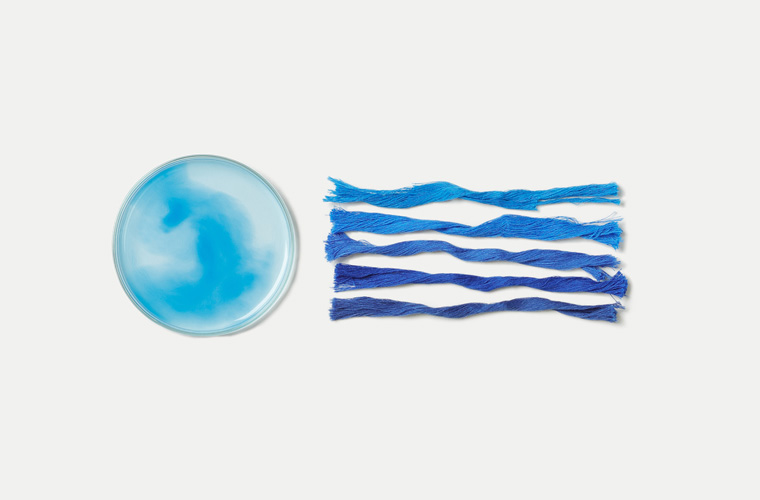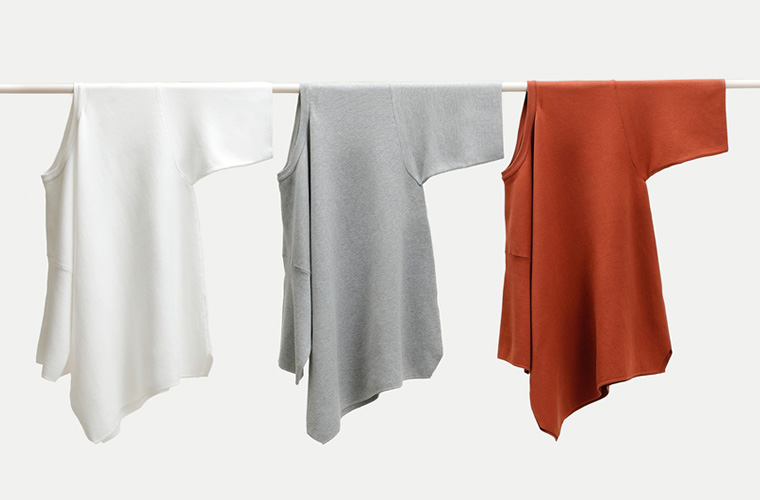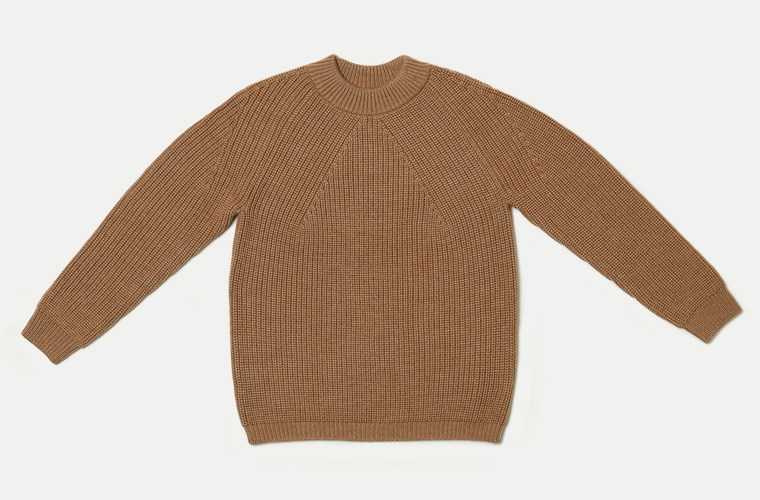
FABRIC / CARE
BATONERのニットに用いられる糸も同じ山形県寒河江市にある紡績工場で作られています。紡績とは原料の繊維を撚(よ)り合わせ、引き伸ばすことで糸の形状へと仕上げる、糸にまつわるすべてのベースとなる工程です。国内でも有数とされる技術によって紡がれる良質な天然の糸がBATONERらしい柔らかい風合いを生んでいるのです。
The yarns used for BATONER’s knitwears are created at the same spinning factory in Sagae City, Yamagata Prefecture. Spinning is a process that becomes the base of everything related to yarns, which twists the raw material fibers and creates the shape of the yarns by stretching it. The high-quality natural yarns spun using the techniques that are considered to be one of the best in Japan creates the soft texture BATONER is known for.
1. MATERIALS


カシミア山羊から採れるカシミア。羊やアンゴラ、アルパカといった動物繊維のウール。植物の綿からできるコットン。そして亜麻を原料とするリネン。
糸のもととなる素材には数多くの種類があります。これらの素材をしっかりと吟味し、使い分けることでBATONERのニットに様々な表情を持たせることができます。
Cashmere taken from cashmere goat. Wool from animal fiber including sheep, angora, and alpaca.
Cotton made from cotton of plants, and linen made from flax. There are many kinds of materials that will be the source of the yarns.
The various expressions of BATONER’s knitwears are created by carefully examining these materials and using it for different purposes.


CARE
ニットは正しい知識でこまめなケアをすると長く着ることができます。
ブラシはこすらずホコリを払うようにかけることで毛並みが揃い、毛玉が出来にくくなります。また、一度着たら休ませることが大事です。
吸った湿気を発散させてから収納することでカビを防ぐことができます。洗濯の際には洗濯絵表示をよく確認してから洗ってください。
Knitwears can be worn for a long time when it is diligently maintained using accurate knowledge. Pilling becomes less likely by brushing it without rubbing it as if removing the dust. It is also important to rest it if after wearing it once. Mildew can be prevented by storing it after diffusing the absorbed moisture. When washing it, please carefully check the washing graphic display.
2. DYEING


糸の染色も寒河江市の染工場と、市内からほど近い山辺町にある染工場との念密な打ち合わせによって行います。
糸を束の状態で染める綛(かせ)染め、綛上げされたコーンの状態で染めるチーズ染め、製品になったニットを染める後染めの技法と、コンピュータ制御された染料をコンマ単位で組み合わせることで無限にも近いパターンの染色が可能となります。
The dyeing of the yarns is also done through thorough planning by the dyeing factories in Sagae City and the dyeing factories in Yamanobe Town near the City.
Pattern dyeing close to an infinite number of patterns becomes possible by combining computer controlled dyes in comma units with skein dyeing that dye the yarn in bundles, cheese dyeing done when it is skeined as a cone, and piece dyeing technique that dyes knitwear that has become a product.
3. GAUGE


聞き馴染みがあまりないかもしれませんが、ゲージという言葉は編み機に使われる針の単位を表します。
1インチの間に何本の針があるかを意味し、7ゲージであれば1インチ内に7本の針、21ゲージでは1インチに21本の針が敷き詰められています。
この数字が低ければ編み目がざっくりとしたローゲージのニット、数字が高くなれば編み目が細かいハイゲージのニットが出来上がります。
Although it may not be so familiar, the word, gauge represents the unit of needle used for knitting.
It signifies how many needles are in an inch. Seven needles in an inch for seven gauges and 21 needles in an inch for 21 gauges are spread all over.
If the number is small, the low gauge knit knitted roughly is created. If the number isf large, a finely knitted high gauge knit is created.


HIGH GAUGE
細かく密に編まれたハイゲージニットはすっきりとして洗練されたイメージを与えます。
BATONERでは主にTシャツやカーディガン、インナーといったアイテムに使用しています。
The high gauge knit knitted finely and densely gives a refined and elegant impression.
For BATONER, it is used mainly for products such as T-shirts, cardigans, and undergarments.


MIDDLE GAUGE
ハイゲージとローゲージの中間にあるミドルゲージニットは、薄すぎず厚すぎず、適度なボリューム感を持つため、春先や秋口の一枚着としても重宝するアイテムです。
Middle gauge knitwears that are in the middle of high gauge and low gauge knitwears come in handy as it is not too thin or thick and has an optimal volume.


LOW GAUGE
編み目がざっくりとし、凹凸がはっきりわかるローゲージニットは、温かく柔らかい雰囲気を持ちます。
アランセーターやノルディックセーターなど、冬場に活躍するニットです。
The roughly knitted low gauge knit that clearly shows the unevenness has a warm and soft atmosphere.
The knitwear, such as Alan sweaters and Nordic sweaters are useful in winter.